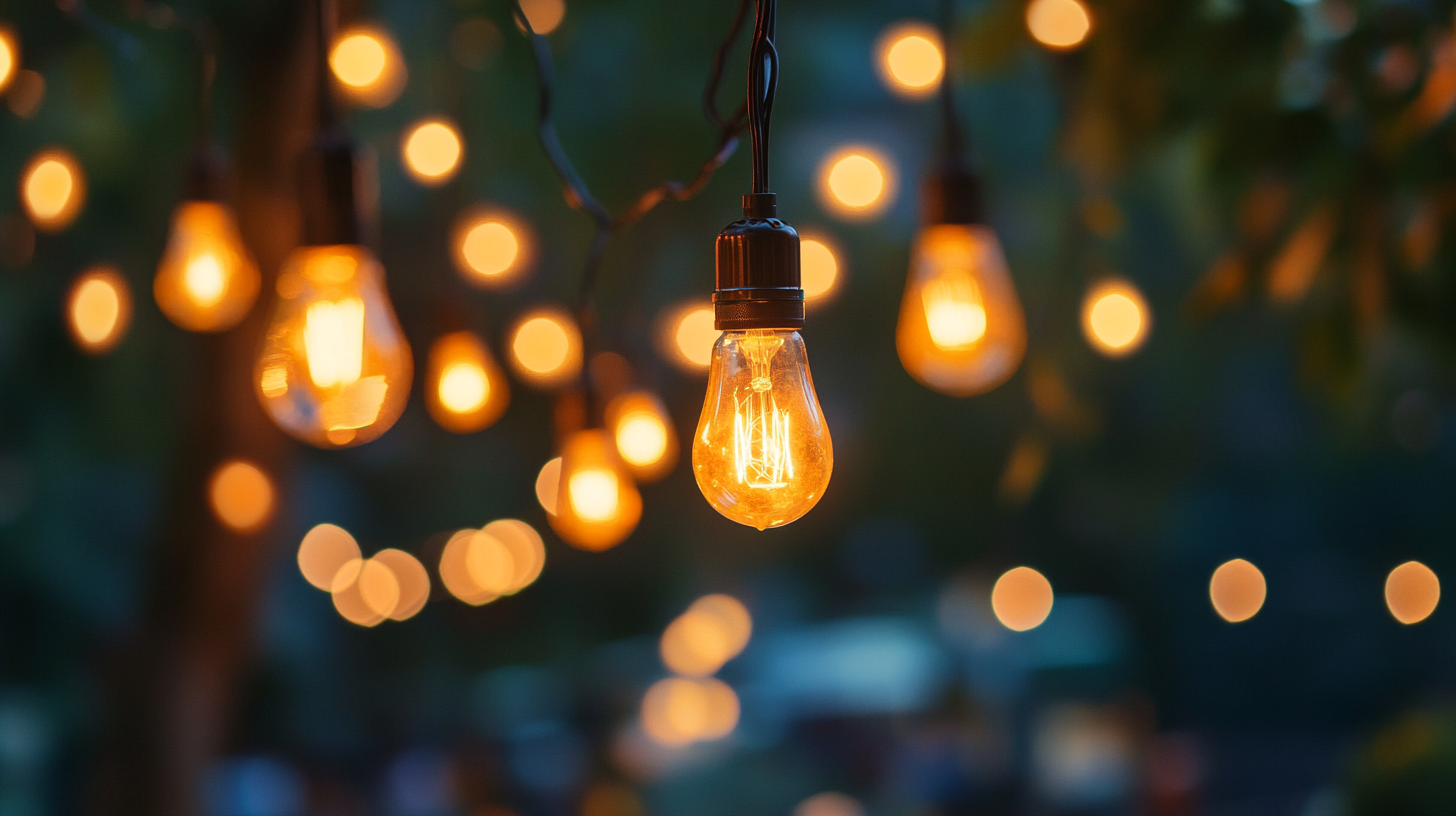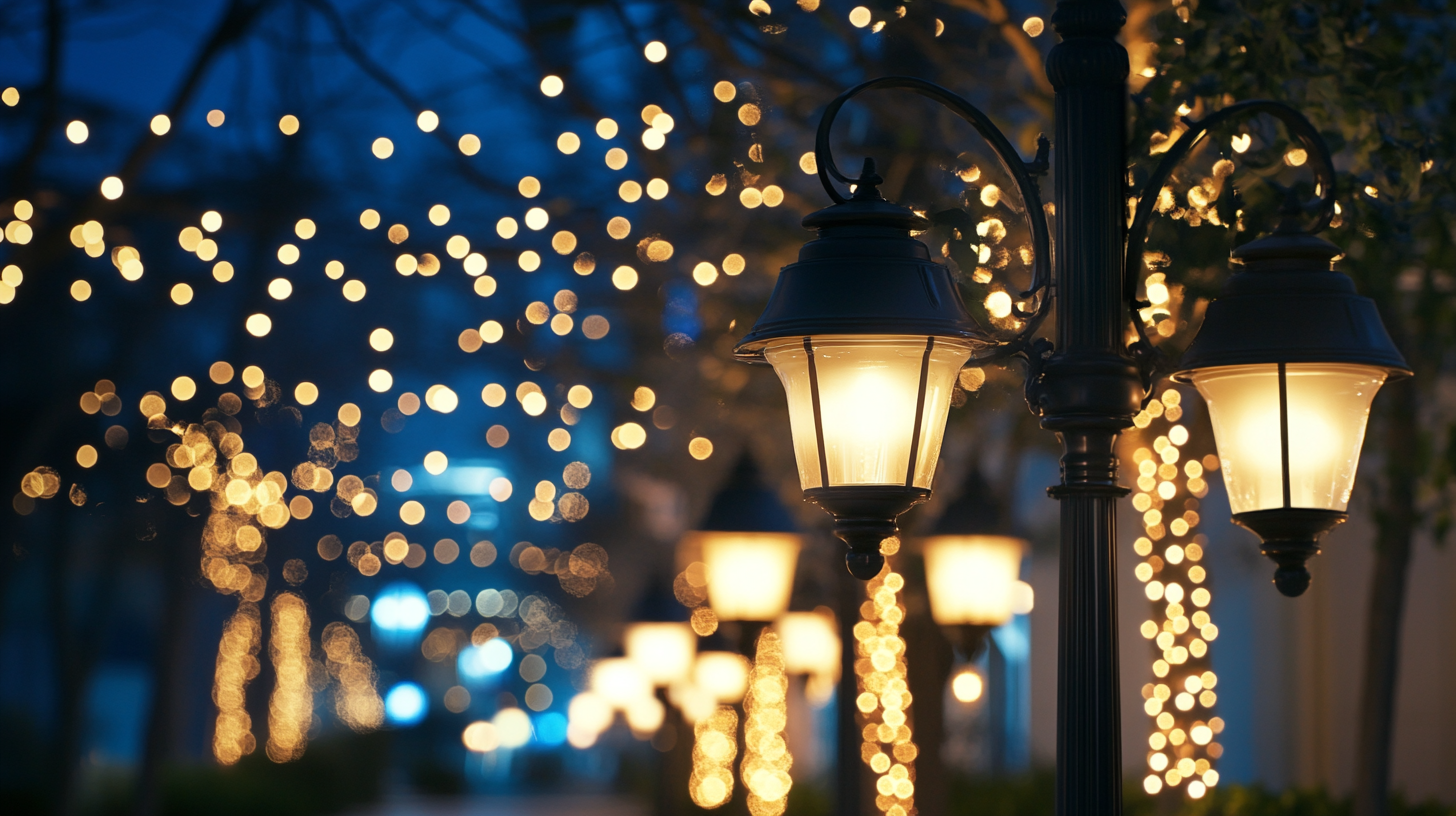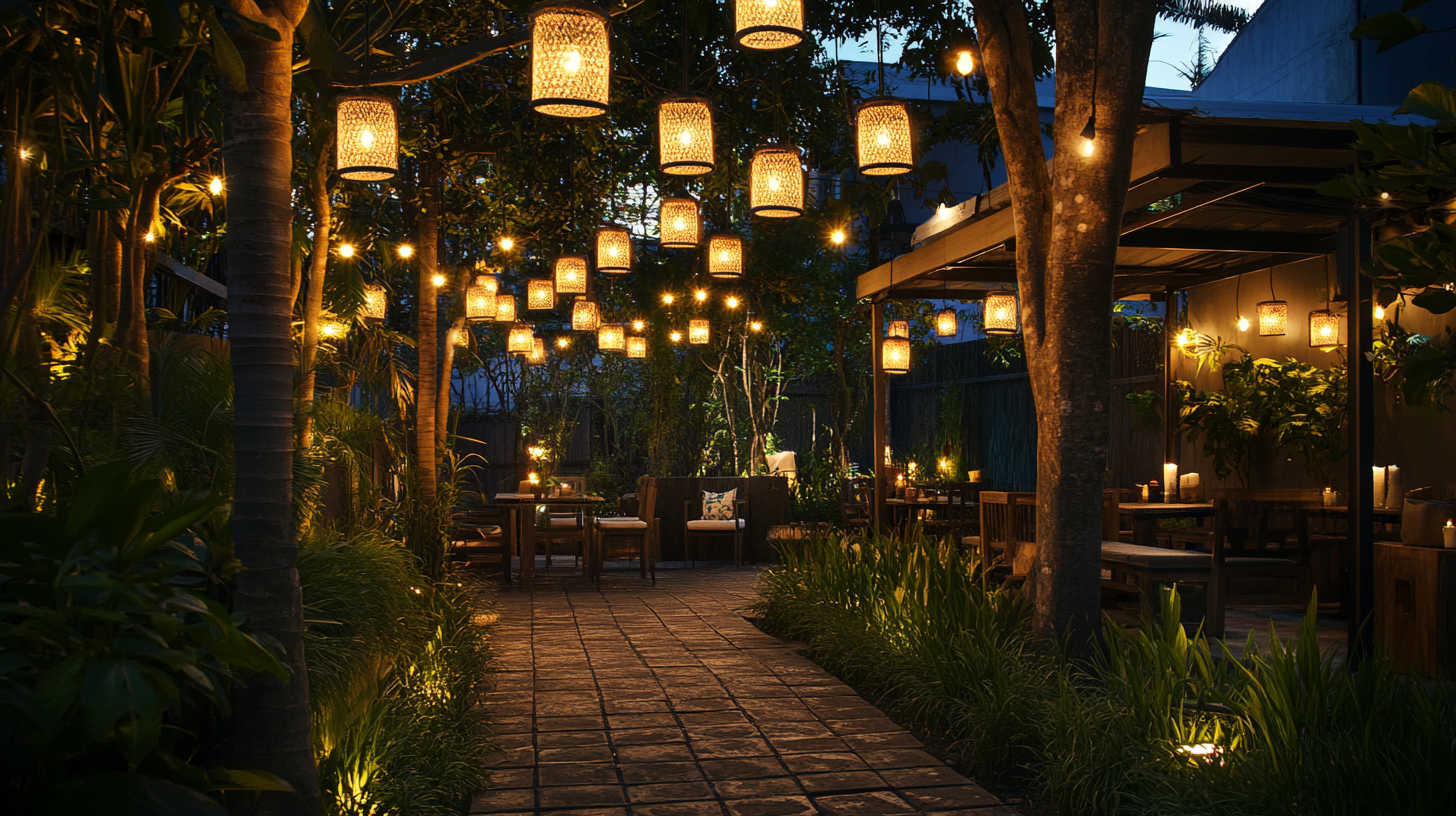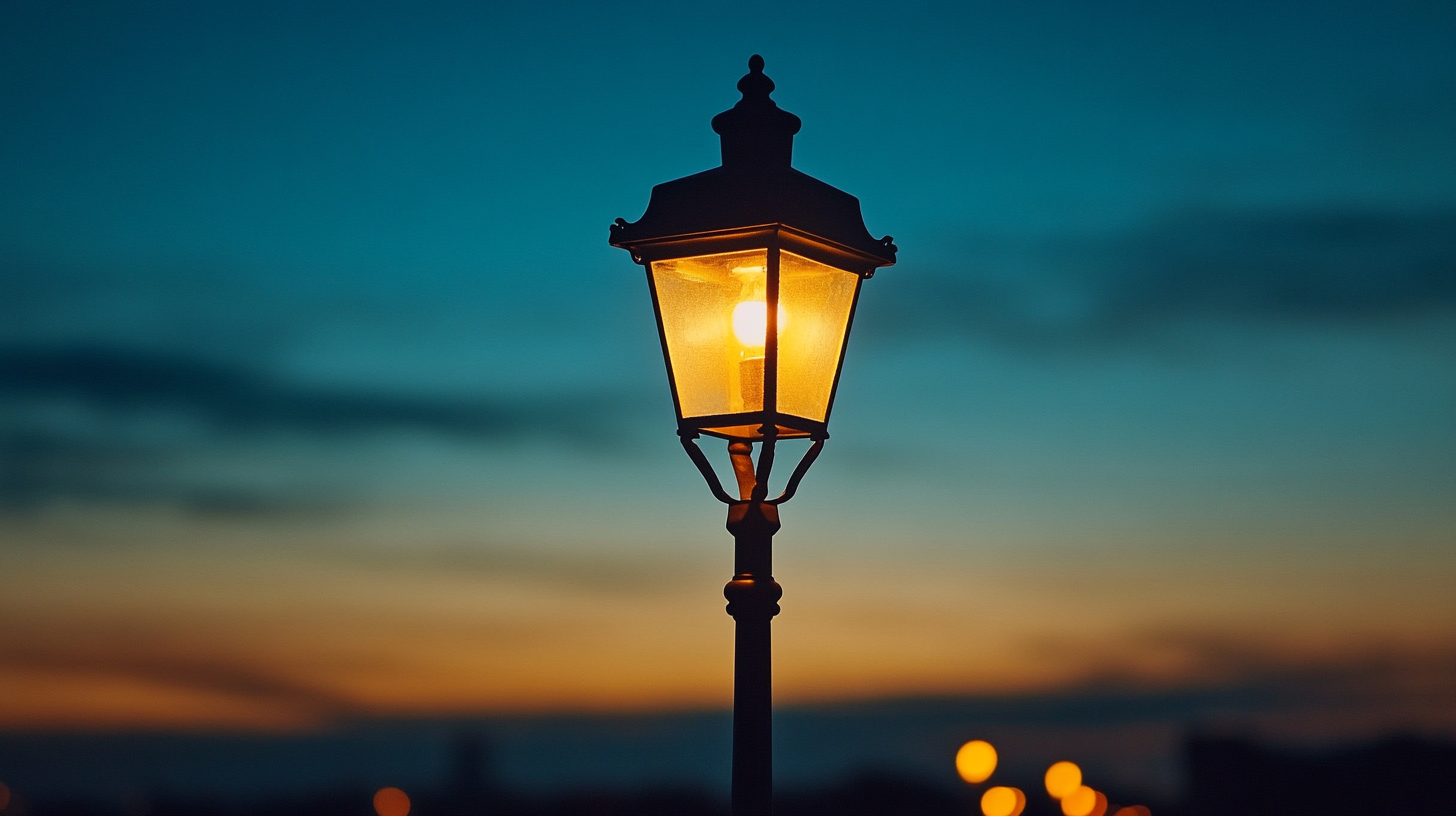Trends in Global Outdoor Lighting Fixtures for 2025: What Buyers Need to Know
As we approach 2025, the landscape of outdoor lighting fixtures is set to undergo transformative changes driven by technological advancements, sustainability concerns, and evolving design preferences. This shift presents both challenges and opportunities for buyers navigating the market. Understanding the latest trends in outdoor lighting fixtures will be essential for making informed purchasing decisions that align with aesthetic desires, functionality requirements, and environmental responsibilities.
In this blog, we will explore the key trends shaping the global outdoor lighting fixtures market, highlighting innovations that enhance energy efficiency, smart technology integration, and eco-friendly materials. We will provide insights into how these trends not only improve outdoor spaces but also contribute to the overall sustainability goals that many consumers and businesses are prioritizing in their projects. Join us as we delve into what buyers need to know to stay ahead in the ever-evolving world of outdoor lighting fixtures.

Emerging Technologies Shaping Outdoor Lighting Fixtures in 2025
As we look towards 2025, the outdoor lighting fixture market is poised for significant transformation, driven by emerging technologies that enhance functionality and sustainability. The integration of smart technology into outdoor lighting is becoming paramount. According to recent industry reports, the global smart lighting market is expected to grow at a CAGR of over 20% from 2023 to 2025, with outdoor applications leading the charge. This growth is fueled by advancements in IoT connectivity, allowing users to control and customize their lighting remotely, thus improving energy efficiency and user experience. At CES 2025, innovative products showcased by leading manufacturers highlighted the increasing importance of connectivity and automation in outdoor lighting solutions. With the introduction of smart sensors and AI-powered systems, fixtures can now adapt to changing environmental conditions, optimize energy consumption, and enhance safety. Moreover, the push towards sustainability means that more fixtures are incorporating energy-efficient LED technology, which not only reduces energy usage but also lowers maintenance costs and environmental impact. Additionally, the rise of aesthetic and functional design in outdoor lighting cannot be overlooked. Manufacturers are focusing on creating versatile products that can seamlessly blend with outdoor architecture while offering enhanced features like color tuning and dynamic lighting effects. Reports indicate that consumer preference is shifting, with a significant portion of buyers willing to pay a premium for designs that offer both style and innovation. As we move towards 2025, these trends will undoubtedly shape the future of outdoor lighting, making it more intelligent, eco-friendly, and visually appealing.

Sustainability Trends: Eco-Friendly Materials and Energy Efficiency
As the world moves towards more sustainable practices, the outdoor lighting industry is responding with innovative solutions that prioritize eco-friendliness and energy efficiency. In 2025, buyers will find a growing selection of lighting fixtures made from recyclable and renewable materials. Manufacturers are increasingly focusing on using materials such as bamboo, recycled aluminum, and bioplastics, which not only reduce the carbon footprint but also promote a circular economy. This shift towards sustainable materials reflects a broader commitment to minimizing environmental impact while still providing stylish and functional lighting options for outdoor spaces.
Energy efficiency is another significant trend that buyers should be aware of. Advancements in LED technology continue to transform outdoor lighting, offering longer lifespans and reduced energy consumption compared to traditional lighting solutions. Solar-powered fixtures are also gaining popularity, allowing homeowners and businesses to harness natural sunlight to power their outdoor lights. This not only lowers electricity bills but also contributes to a more sustainable energy model. As consumers become more environmentally conscious, the demand for these energy-efficient lighting solutions will only continue to rise.
In addition to the tangible benefits of eco-friendly materials and energy-efficient designs, buyers are also increasingly interested in the aesthetics of their outdoor spaces. The trend is moving towards versatile designs that complement a wide range of architectural styles while still adhering to sustainable practices. As brands innovate and respond to consumer preferences, outdoor lighting fixtures will not only illuminate spaces effectively but also enhance the beauty of the environment.

Smart Lighting Solutions: The Rise of IoT in Outdoor Illumination
The rise of smart lighting solutions marks a transformative shift in outdoor illumination, driven largely by the integration of Internet of Things (IoT) technology. As urban regions increasingly prioritize sustainability and efficiency, smart outdoor lighting fixtures stand out as a solution that enhances security while reducing energy consumption. Equipped with sensors and connectivity features, these innovative products can adjust brightness based on real-time conditions, ensuring optimal light levels only when necessary.
Moreover, IoT-enabled outdoor lighting systems offer users unprecedented control and versatility. Homeowners and municipalities can manage lighting from smart devices, allowing for customized schedules and moods. For instance, the ability to dim lights during late-night hours or to increase intensity in response to motion detection not only contributes to energy savings but also improves safety in public spaces. The synergy between smart lighting and smart city initiatives is becoming increasingly clear, as advanced lighting solutions help to create a more connected and efficient urban environment.
As we look to 2025, the demand for smart outdoor lighting fixtures is expected to surge. Buyers will not only seek aesthetically pleasing designs but also prioritize functionality and adaptability. Investing in IoT lighting solutions means embracing the future where outdoor spaces are not only illuminated but intelligently monitored and managed, paving the way for enhanced user experiences and environmentally friendly practices.

Design Aesthetics: Minimalism and Customization in Lighting Fixtures
As we move towards 2025, the outdoor lighting fixture market is seeing a significant shift towards minimalism and customization, capturing the attention of buyers and designers alike. According to a report by Grand View Research, the global outdoor lighting market is expected to reach USD 21.9 billion by 2025, driven by increasing urbanization and the demand for energy-efficient solutions. This surge is paving the way for innovative designs that not only serve a functional purpose but also enhance outdoor aesthetics.
Minimalism reigns supreme in the design trends for outdoor fixtures. Simplicity in shape and color, with an emphasis on clean lines, allows these fixtures to blend seamlessly with various architectural styles. As highlighted by the Designers Association, minimalist design can reduce distractions, focusing attention on the beauty of surroundings while ensuring adequate illumination. This trend resonates well with contemporary homeowners who prioritize unobtrusive lighting solutions that still deliver on style and performance.
Customization has also become a key aspect of lighting design in outdoor spaces. Modern consumers are seeking options that allow for personal expression and unique installations. According to a report by Allied Market Research, the customization segment in lighting design is projected to grow at a CAGR of 8% from 2022 to 2030. Buyers are increasingly attracted to brands that offer tailored solutions, enabling them to choose materials, colors, and finishes that reflect their individual preferences and match their property’s aesthetic. This dual focus on minimalism and customization not only enhances the visual appeal of outdoor spaces but also caters to the evolving needs of modern consumers.
Market Insights: Key Consumer Preferences for Outdoor Lighting in 2025
As we approach 2025, understanding key consumer preferences for outdoor lighting fixtures becomes essential for both manufacturers and buyers. The shift towards sustainable and energy-efficient solutions is a defining trend, driven largely by a growing awareness of environmental issues among consumers. The popularity of LED technology continues to rise, with its attributes of energy efficiency, long lifespan, and cost-effectiveness aligning perfectly with the preferences of the eco-conscious buyer. This trend is not just limited to residential settings; commercial environments are also increasingly adopting LED solutions as part of broader sustainability initiatives.
In addition to sustainability, design aesthetics play a crucial role in consumer choices for outdoor lighting. As the market evolves, consumers are opting for fixtures that not only serve functional purposes but also enhance the visual appeal of their outdoor spaces. Contemporary styles that blend seamlessly with modern architecture are in high demand, reflecting a desire for personalization and uniqueness in home decor. There is a notable interest in customizable lighting solutions that allow consumers to create atmospheres tailored to specific moods or occasions, further emphasizing the importance of versatility in outdoor lighting products.
Moreover, the influence of cultural trends cannot be overlooked. Younger generations are increasingly looking for products that resonate with their lifestyle choices and social values. This ties in closely with the growing trend of integrating traditional and artisan designs within modern lighting fixtures, appealing to consumers who appreciate heritage and craftsmanship. With these insights, buyers can make informed decisions in a market poised for significant growth amidst evolving preferences and trends.







